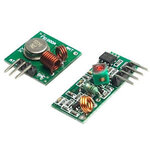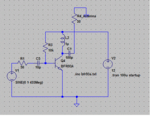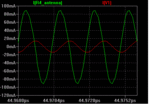truffaldino
Junior Member level 3
Hello,
I found very cheap 433MHz transmitter/receiver kits on ebay (see image attached). They have poor range. I am wandering if one-transistor amplifier attached before transmitter antenna will extend the range.
I have designed one transistor amplifier myself (see image attached) and doubt it will work properly. In theory (according LTSPICE simulations) it should extend range six-fold.
Since I have never dealt with such devices before I need your advice.
Thank you in advance
I found very cheap 433MHz transmitter/receiver kits on ebay (see image attached). They have poor range. I am wandering if one-transistor amplifier attached before transmitter antenna will extend the range.
I have designed one transistor amplifier myself (see image attached) and doubt it will work properly. In theory (according LTSPICE simulations) it should extend range six-fold.
Since I have never dealt with such devices before I need your advice.
Thank you in advance


